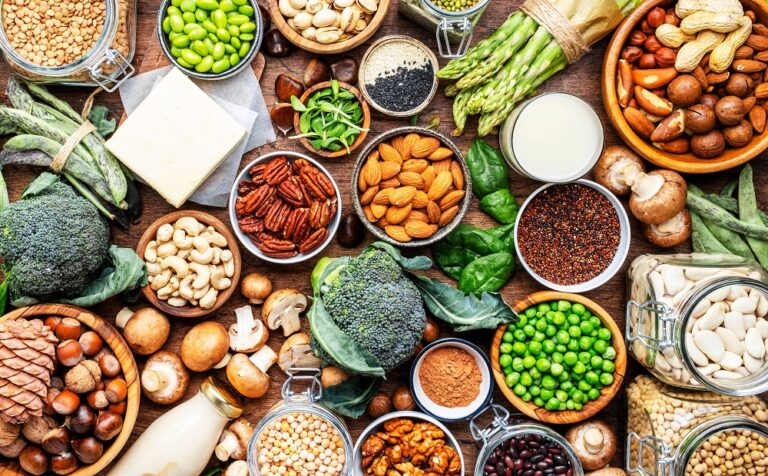For many Americans, the past four years in particular have been a catalyst for positive lifestyle changes. Many strive to live healthier lives by consuming healthier and more natural foods, which benefits their overall health. They have also developed a new desire to read labels and understand ingredients. On this path to more conscious consumption, more and more people are considering adopting a plant-based lifestyle: the practice of consuming all or mainly plants. However, before starting a new diet, it’s important to understand the benefits of plant-based eating, your personal needs, and the diet options available so you can make an informed decision.
Why is plant-based eating healthy?
A diet that focuses on fruits, vegetables and other plant foods can provide nutrients that the body uses for energy while avoiding many of the disadvantages associated with eating meat. Eating whole fruits, vegetables, nuts, seeds and grains is beneficial because they contain an abundance of nutrients that support healthy function in all body systems.
The macronutrients (protein, fat and carbohydrates) and micronutrients (vitamins and minerals) we see on nutrition labels may only be an indication of a food’s benefits. In addition to phytonutrients and numerous other compounds, many plant foods are suitable
as ‘superfoods’.
Vitamins and minerals found in plants, as well as phytonutrients and antioxidants, can, depending on the nutrient, keep cells healthy, allowing the immune system to function optimally. In addition, the fiber present in all unprocessed plant foods maintains their regularity.
Do you only have to eat plants to be plant-based?
In general, “plant-based” refers to a lifestyle in which a person eats only or mainly plants.
Another term floating around is ‘plant-forward’. A plant-forward diet emphasizes whole grains, fruits,
vegetables, legumes, seeds and nuts, but not limited to those foods. Someone who claims to be plant-forward may be vegetarian, vegan or flexitarian, but what does following this lifestyle entail?
Vegetarian
A vegetarian abstains from eating animal products, such as meat, poultry or fish. In the field of ethics
Vegetarians are against killing animals for food, but generally find it acceptable to consume animal by-products such as milk and eggs, if the animals are kept under adequate conditions.
Vegan
Vegan and vegetarian diets both exclude meat and seafood. However, vegan diets go one step further
eliminating other foods of animal origin. In addition to avoiding meat, vegans avoid dairy products, eggs and honey. In addition, vegan foods never contain animal husbandry by-products such as lard, whey or gelatin.
Research shows that the plant-based lifestyle is on the rise. About 1 percent of Americans consider themselves vegan, up from 3 percent in 2018, while 4 percent are vegetarian. Moreover, almost half of Americans call themselves flexitarians.
Flexitarian
The flexitarian diet is essentially a flexible alternative to being a vegetarian. You’re still focusing on
fruits, vegetables, whole grains, legumes and nuts, with occasional meat, poultry, fish or eggs. When including meat in your diet, choose organic, free-range, pastured,
or grass-fed beef, chicken or turkey. And always opt for slimmer cuts
to minimize extra animal fat.
A flexitarian diet can be a good option for those who are just starting to experiment with a plant-based lifestyle. It’s a great way to maintain a healthy, balanced diet while protecting the environment by reducing the energy and resources used to produce red meat.
Simple steps to get started with Plant Based
A plant-based diet is not a one-size-fits-all way of eating. And while individuals’ motivations to adopt
vary a plant-based diet, they all want to live their best lives. Here are some simple tips to seamlessly integrate more plants into your diet and reap the many benefits.
- Prepare yourself for success. Don’t start eating completely plant-based all at once. Your taste buds have adapted to your current way of eating, causing you to crave that food. Start with one plant-based meal per day and slowly increase to three per day over one to two months.
- Keep it simple. You would be surprised at the delights of simplicity. There’s something about a bowl of piping hot oatmeal or a cool, fruit-filled smoothie that never gets old. Once you get the hang of it, you can try challenging recipes, but don’t let it get in the way of your success.
- Don’t focus on the label. Focus on the food! This journey is not about being able to call yourself “plant-based” or “plant-forward.” It’s about filling your body with living foods that can transform your life. Start by going straight to the source by hitting the farmers market and produce aisle!
- Consider supplementing. When you first start following a plant-based lifestyle, it can be challenging to meet your daily nutritional needs, including macronutrients like protein and micronutrients like vitamins.
So it is important to choose the right plant-based foods. For example, soy, quinoa and nuts are good sources of protein, and tofu, lentils and spinach are rich in iron, but sometimes they are.
needed to replenish. Plant-based certified products like those from the HERBALIFE® V line can help you reach your macro goal. The new product line includes plant-based products
protein shakes in classic and chocolate flavors, formulated with 20 grams of protein (peas, pumpkin seeds and chia) and a plant-based immune support* with vitamins C and D, and zinc to balance and support daily immune health*. Other products in the Herbalife V line include Plantbased Digestive Support* and a Greens Booster. - Also focus on the health of the environment! By doing your part, you can create a deeper connection with your food and the natural world. Plus, a healthy environment helps us all stay healthy! Reducing food waste is a simple action that can have a big impact. In a 2021 study commissioned by Herbalife
when it comes to plant-based diets, 40% of respondents said their food choices are the result of a desire to be more environmentally friendly.

